In a world where every click, swipe, and scroll holds the key to consumer preference, the battle for attention has never been more fierce.
With an overwhelming surge of 5.6 billion searches per day on Google alone, the digital landscape is cluttered with brands vying for a moment in the spotlight.
Amidst this digital cacophony, a beacon of hope shines brightly for marketers- “the transformative power of zero-party data”.
This not-so-secret weapon has been shown to skyrocket engagement rates by an astonishing 10X, turning passive onlookers into active participants in the brand narrative.
Imagine harnessing data that customers willingly share, offering a panoramic view of their desires, expectations, and preferences.
This is the promise of zero-party data, a goldmine for crafting hyper-personalized marketing strategies that don’t just reach an audience but resonate with them on a deeply personal level.
As we delve into the world of zero-party data, prepare to uncover the secrets to not only capturing attention in a saturated market but holding it, turning fleeting interactions into lasting engagements, and transforming satisfied customers into vocal advocates for your brand.
Don’t Forget Customers Don’t Buy Products; They Buy Solutions
In today’s market, customers are inundated with options, making it crucial for businesses to not just sell products but to offer solutions.
The key to achieving this lies in understanding the specific needs, preferences, and challenges of your audience.
This approach shifts the focus from a one-size-fits-all product push to creating tailored solutions that address the unique problems of each customer.
By prioritizing this understanding, companies can foster stronger connections, ensuring that their offerings resonate on a personal level and stand out in a crowded marketplace.
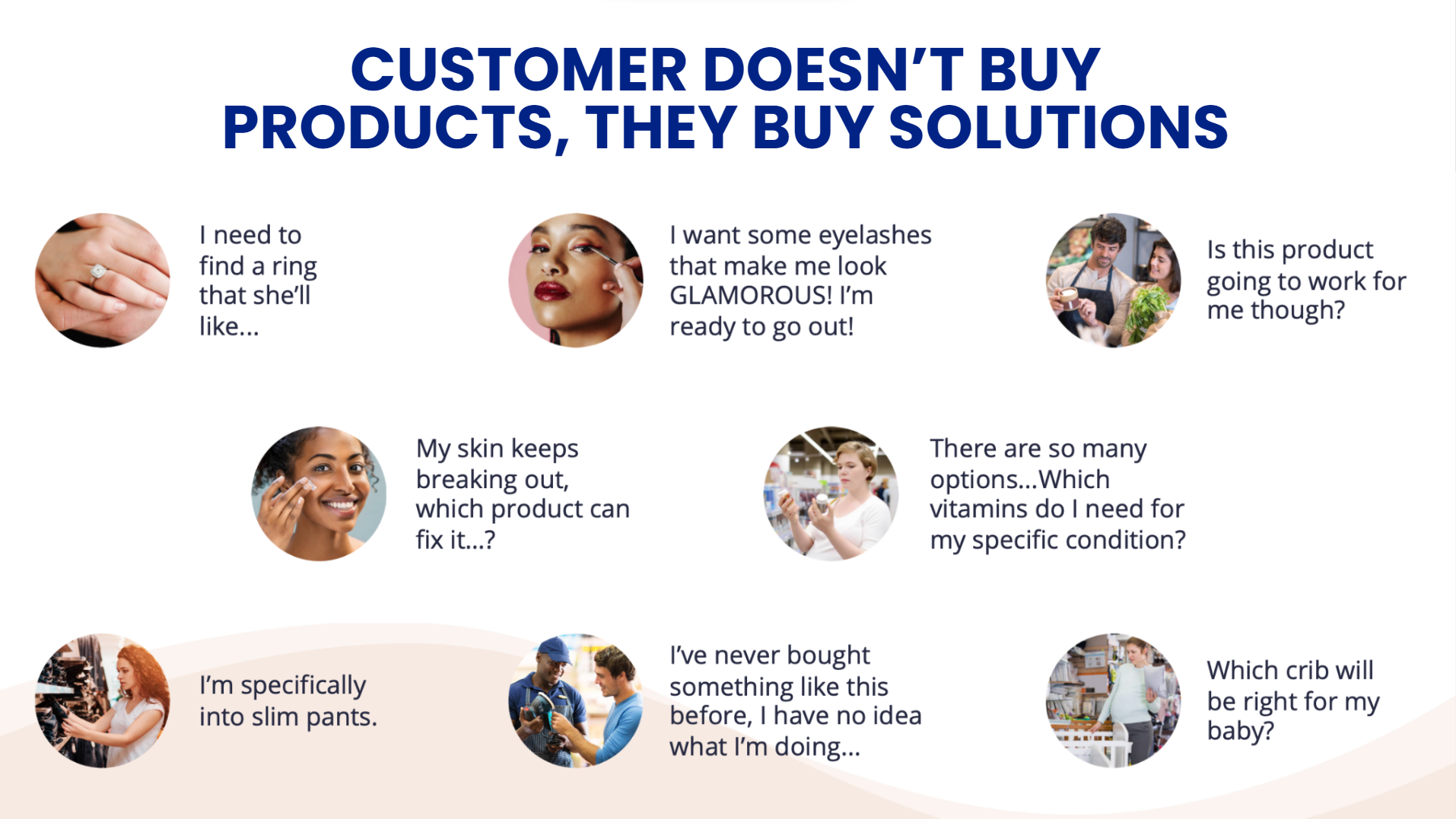
What is Zero-Party Data?
Zero-party data is information that customers intentionally and proactively share with brands.
Unlike first-party data, which is collected through interactions, or third-party data, which is bought from external sources, zero-party data comes directly from the consumer.
This could be through surveys, preference centers, or direct interactions, providing explicit insights into what the customer likes, needs, and expects from your brand.
This direct line of communication opens up a world of opportunities for businesses to align their offerings with customer expectations, creating a more personalized and engaging experience.
Benefits of Using Zero-Party Data
Leveraging zero-party data can significantly enhance your marketing strategy in several ways:
- Better Conversion Rate
Knowing exactly what your customers want allows you to tailor your marketing efforts more effectively, leading to higher conversion rates.
When you understand your customers’ preferences, needs, and pain points directly from them, you can tailor your marketing efforts with precision.
This personalized approach significantly boosts the likelihood of conversion, as customers see solutions that resonate with their specific circumstances, making it easier for them to say “yes.” - Higher CLVs (Customer Lifetime Values)
Personalized experiences foster loyalty, encouraging repeat business and increasing the lifetime value of each customer.
By continuously aligning your offerings and communications with the evolving preferences of your customers, you foster a sense of loyalty and satisfaction.
This ongoing relationship not only encourages repeat purchases but also elevates the overall value of each customer to your brand over time.
Happy customers are more likely to stick around, increasing their lifetime value to your business. - Better Lookalike Audience
With precise data, you can create more accurate lookalike audiences for your advertising campaigns, reaching potential customers who are more likely to be interested in your offerings.
By understanding the specific characteristics of your existing customers, you can more precisely target new prospects who share similar traits.
This means your marketing dollars are spent engaging individuals who are more likely to be interested in your offerings, improving the efficiency of your ad spend, and expanding your customer base with the right kind of prospects. - Better Onsite Personalization
Zero-party data enables you to customize the user experience on your site, showing content, offers, and products that are most relevant to each visitor.
From personalized product recommendations to tailored content and offers, every aspect of your site can speak directly to the individual’s preferences and needs.
This level of personalization not only enhances the user experience but also drives higher engagement and conversion rates onsite. - Better Communication Personalization
Tailor your communication, be it email or social media, to reflect the preferences and interests of your audience, making every message feel personal.
This means moving beyond generic messages to creating content that addresses the customer’s unique interests, recent interactions, and preferences.
Personalized communication fosters a deeper connection and relevance, driving higher open rates, engagement, and loyalty. - Better Offsite Personalization
Use zero-party data to personalize your ads and content across the web, ensuring that your marketing feels relevant no matter where your customers see it.
Tailor your ads, social media campaigns, and even third-party site experiences to reflect the preferences and interests of your audience.
This consistent, personalized journey across the web reinforces your brand’s understanding and care for its customers, enhancing brand perception and engagement across multiple touchpoints. - Clean-Room Monetization
Safely leverage your zero-party data in secure environments to create new revenue streams without compromising customer privacy.
By utilizing data clean rooms, you can safely leverage this valuable information to unlock new revenue opportunities, collaborate with partners, and drive targeted advertising in a privacy-compliant manner.
This approach not only respects the customer’s data privacy but also opens up new pathways for growth and monetization.
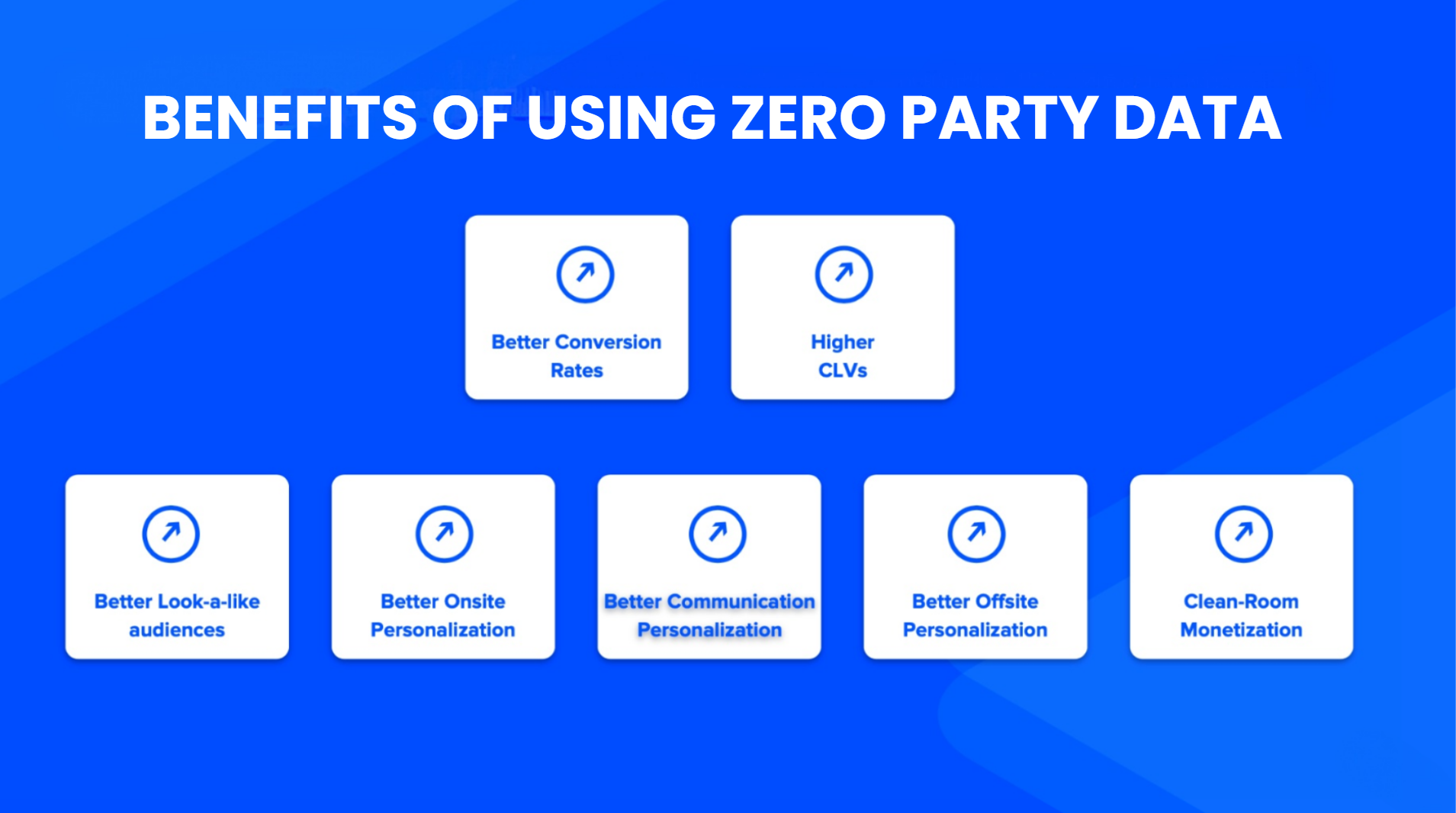
Why Customers Don’t Mind Sharing Their Data?
The willingness of customers to share their data is rooted in the value exchange it enables:
- 83% of global consumers are open to trading personal and preference data for the chance to win a prize, highlighting the appeal of gamification and rewards.
- 86% of global consumers would exchange their data for early or exclusive access to products and services, emphasizing the desire for VIP treatment.
- 91% of consumers are willing to share their data in exchange for loyalty rewards, showcasing the value placed on long-term relationships with brands.
- 76% of consumers are more inclined to consider purchases from brands that offer personalized experiences, underscoring the importance of customization in driving purchase decisions.
This openness to data sharing presents a unique opportunity for brands to deepen their understanding of their audience, crafting marketing strategies that are not just effective but are also welcomed by consumers.
By respecting the exchange of value and using zero-party data to deliver personalized experiences, brands can transform the way they engage with their audience, turning casual browsers into loyal customers and enthusiastic brand advocates.
How Sephora Uses Zero-Party Data to Increase Sales?
Sephora stands out as a prime example of a brand leveraging zero-party data to skyrocket its sales.
By inviting customers to share their beauty preferences through quizzes and a Beauty Insider preferences center, Sephora gathers invaluable insights directly from its audience.
This information enables Sephora to tailor recommendations, offers, and content that resonate deeply with each customer’s unique beauty journey. The result?
A personalized shopping experience that not only delights customers but also drives significant increases in sales and customer loyalty, proving the power of zero-party data in creating a targeted, customer-centric marketing approach.
Complete Framework To Understand “Zero-Party Data”
To understand the complete framework of zero-party data, we need to first break the entire framework into basic three sub-frameworks:
- “Know Me”
- “Get Me”
- “Wow Me”
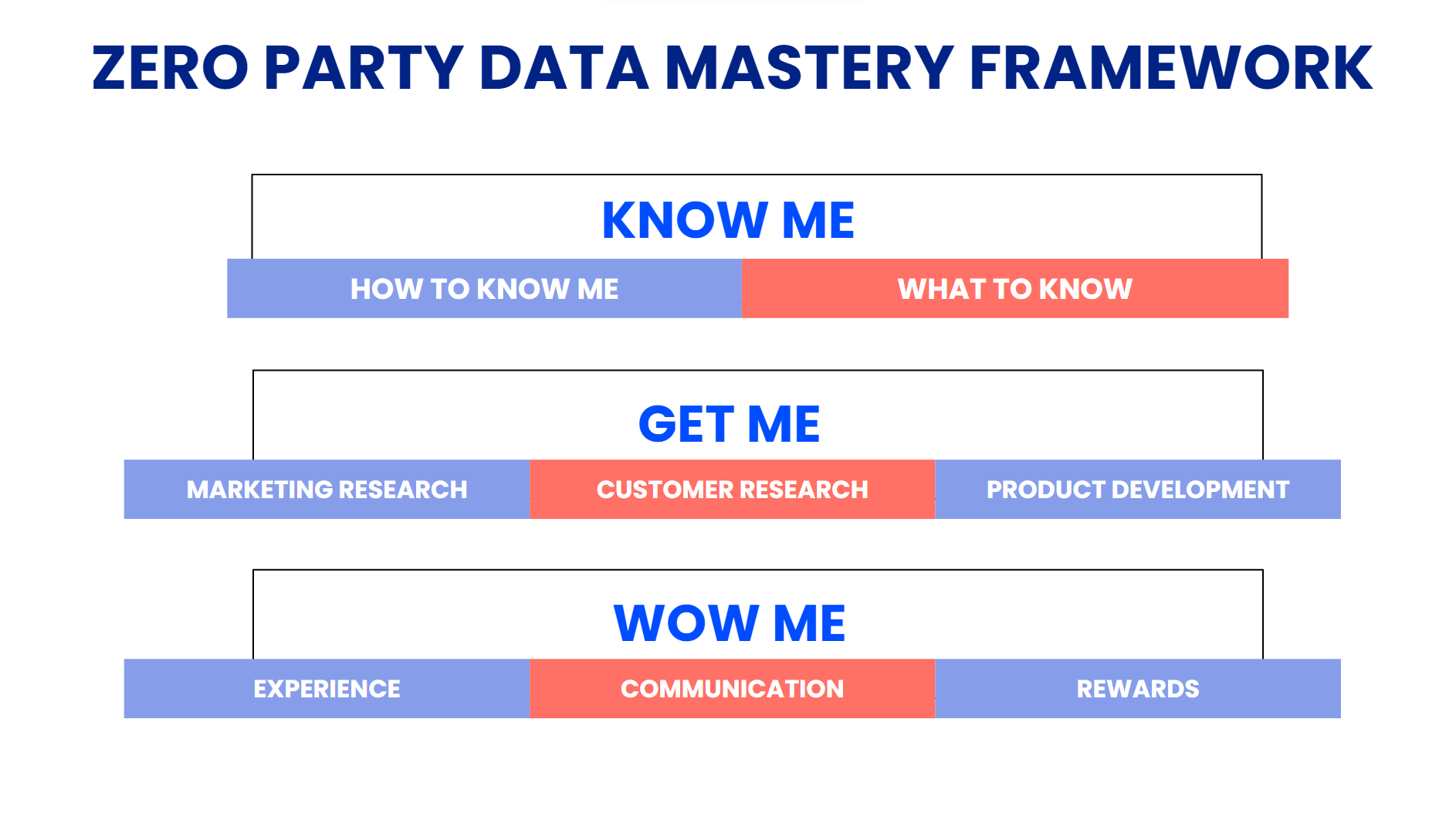
#1 The “Know Me” Framework
At the heart of leveraging zero-party data is the “Know Me” framework, a comprehensive approach that ensures businesses not only gather customer data but do so in a way that fosters trust and personalization. Here’s how it unfolds:
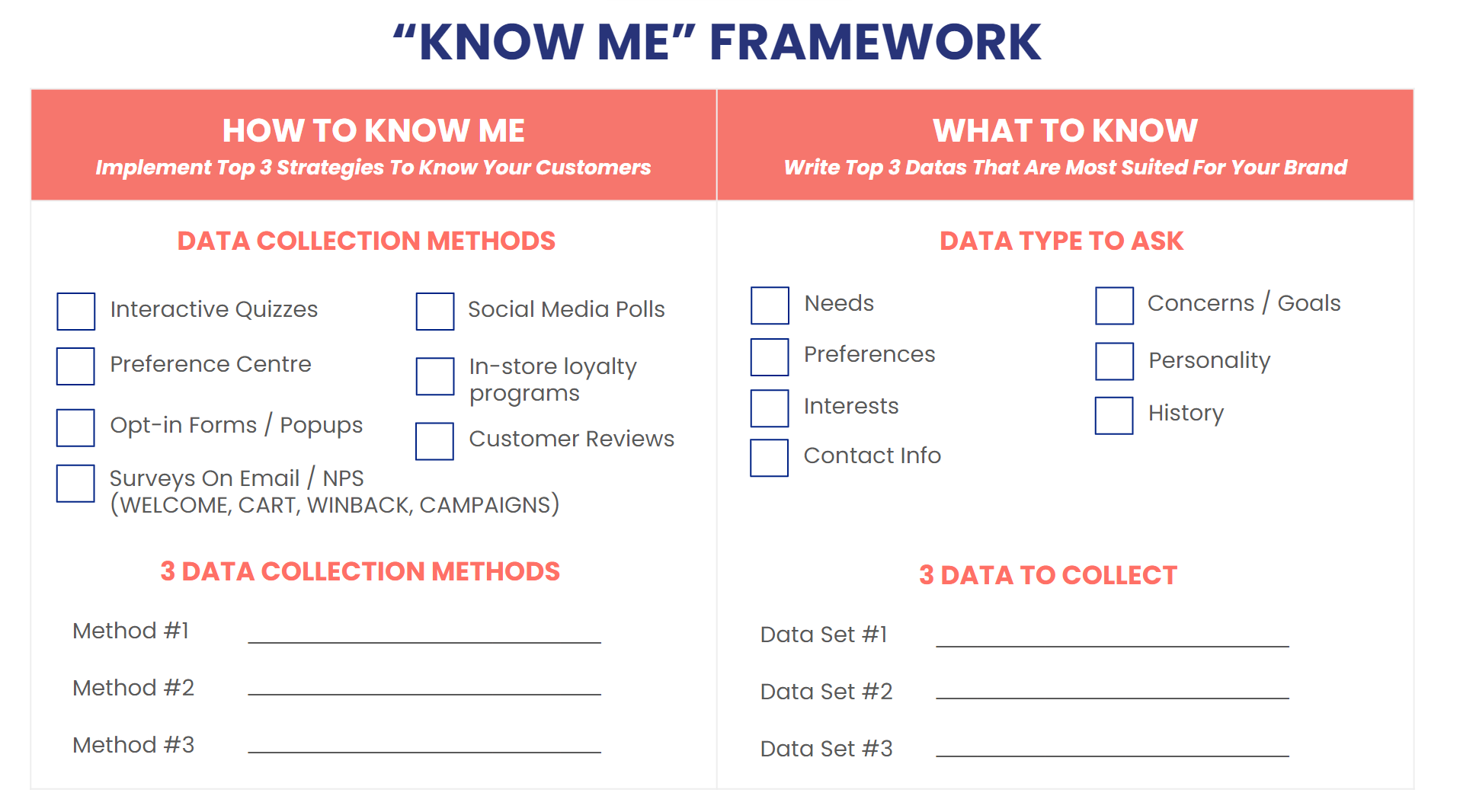
a. How To Know Me
This includes how to know your customers
Data Collection Methods:
- Interactive Quizzes– Engage customers with quizzes that offer them value in return for their data, such as personalized product recommendations.
- Preferences Center– Allow customers to tailor their interactions with your brand by setting their preferences directly.
- Opt-in Forms/Pop-ups– Use these to gather essential information at key moments in the customer journey, such as website sign-up.
- Online Surveys– Deploy surveys to collect detailed insights about your customers’ needs and preferences.
- Social Media Polls– Utilize the interactive nature of social media to gather casual, yet valuable, customer insights.
- Loyalty Programs– Encourage sign-ups by offering rewards in exchange for data, deepening customer relationships.
- Customer Reviews– Analyze feedback for insights into your customers’ preferences and areas for improvement.
b. What to Know
This includes what to know about your customers!
Type of Data/Questions to Ask:
- Needs– Understand the primary problems your customers are looking to solve with your products or services.
- Preferences– Gather information on product types, brands, or features your customers prefer.
- Interests– Identify topics or product categories that catch your customers’ attention.
- Contact Information– Collect email addresses, phone numbers, etc., for direct communication.
- Concerns/Goals– Learn about the challenges your customers face or the goals they wish to achieve with your offerings.
- Personality– Gauge your customers’ personality traits to tailor your marketing tone and content.
- History– Keep track of your customer’s interaction history with your brand for a contextual relationship.
The “Know Me” framework revolves around creating a detailed profile of your customers based on zero-party data.
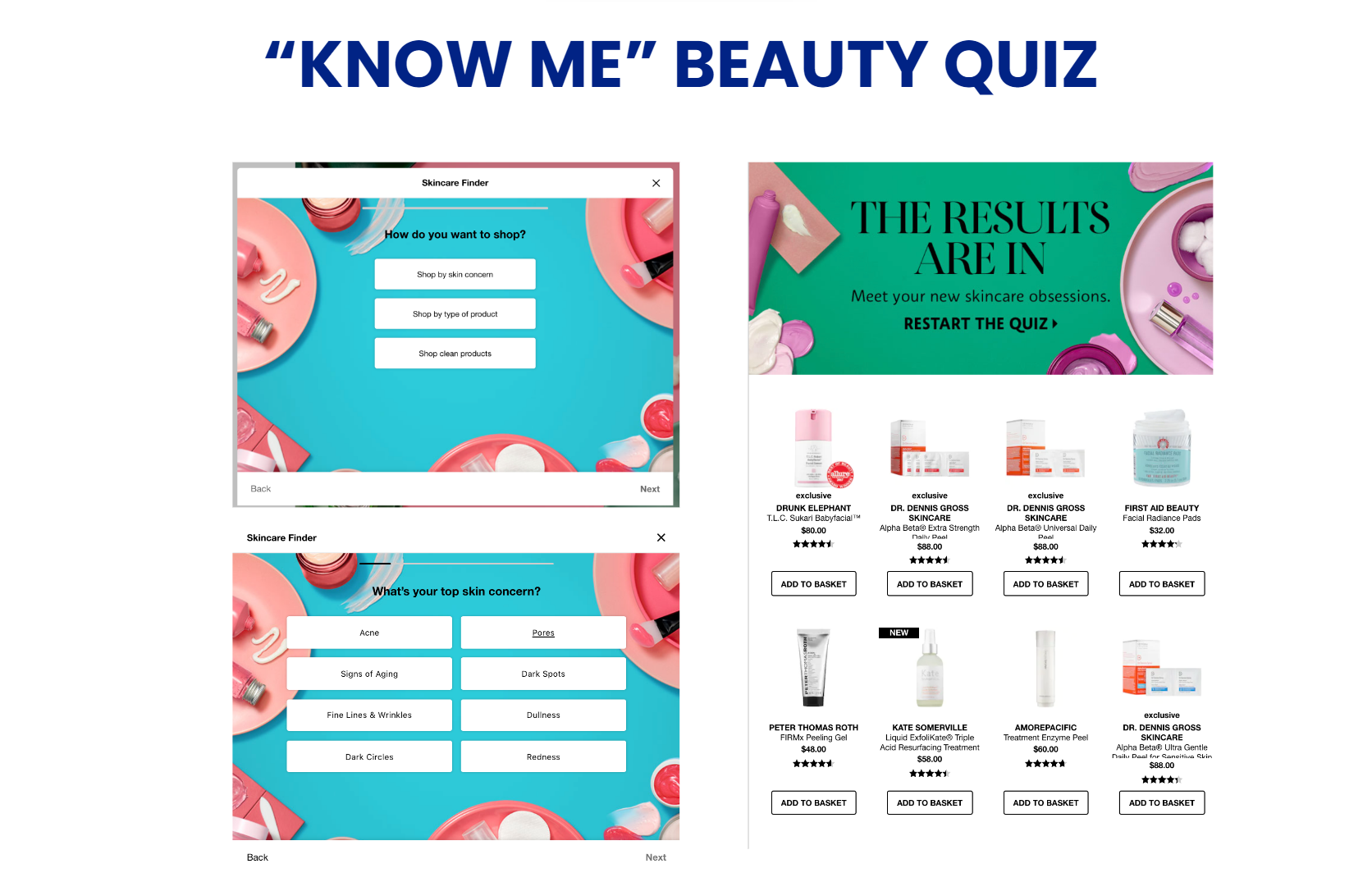
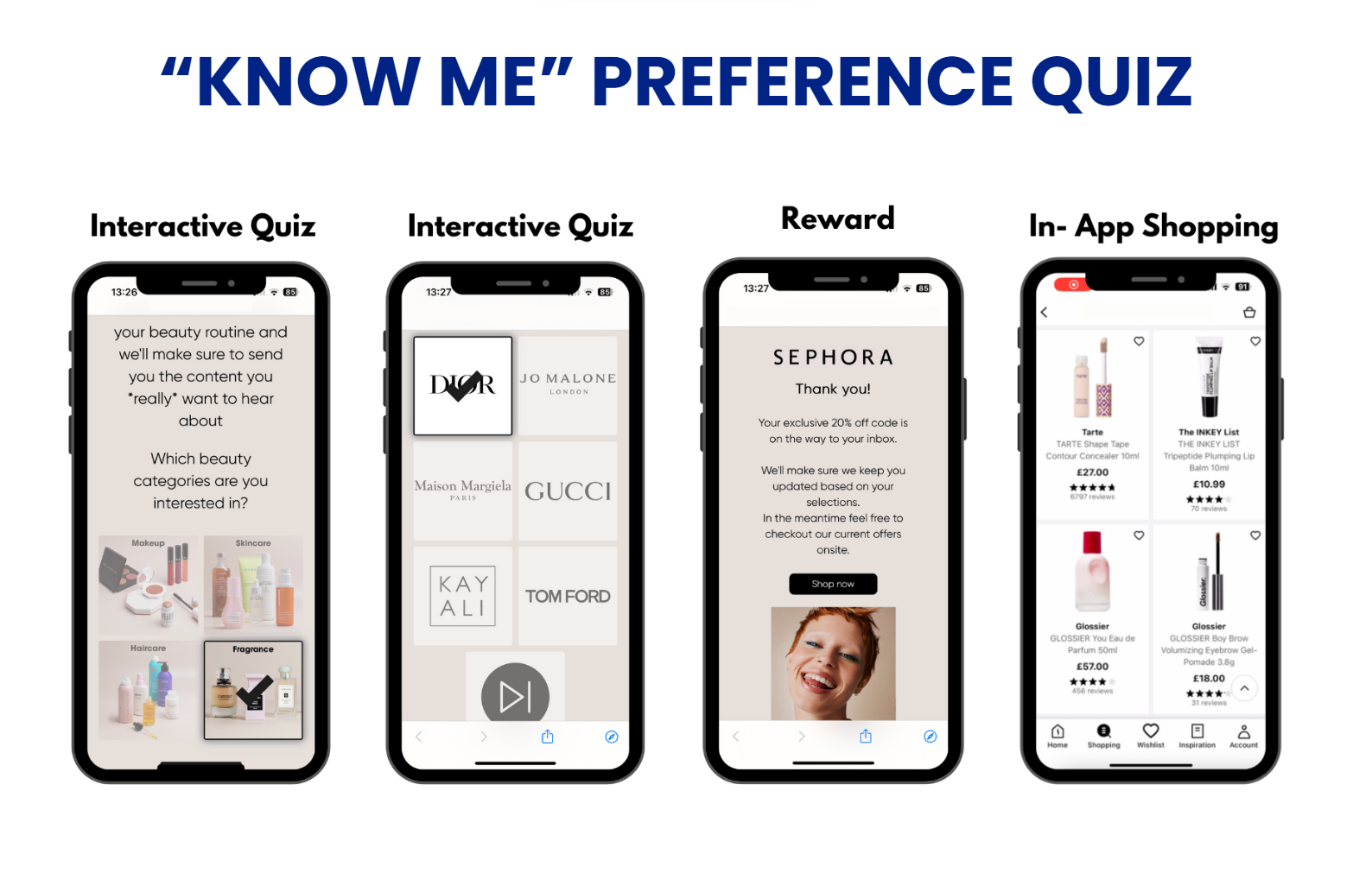
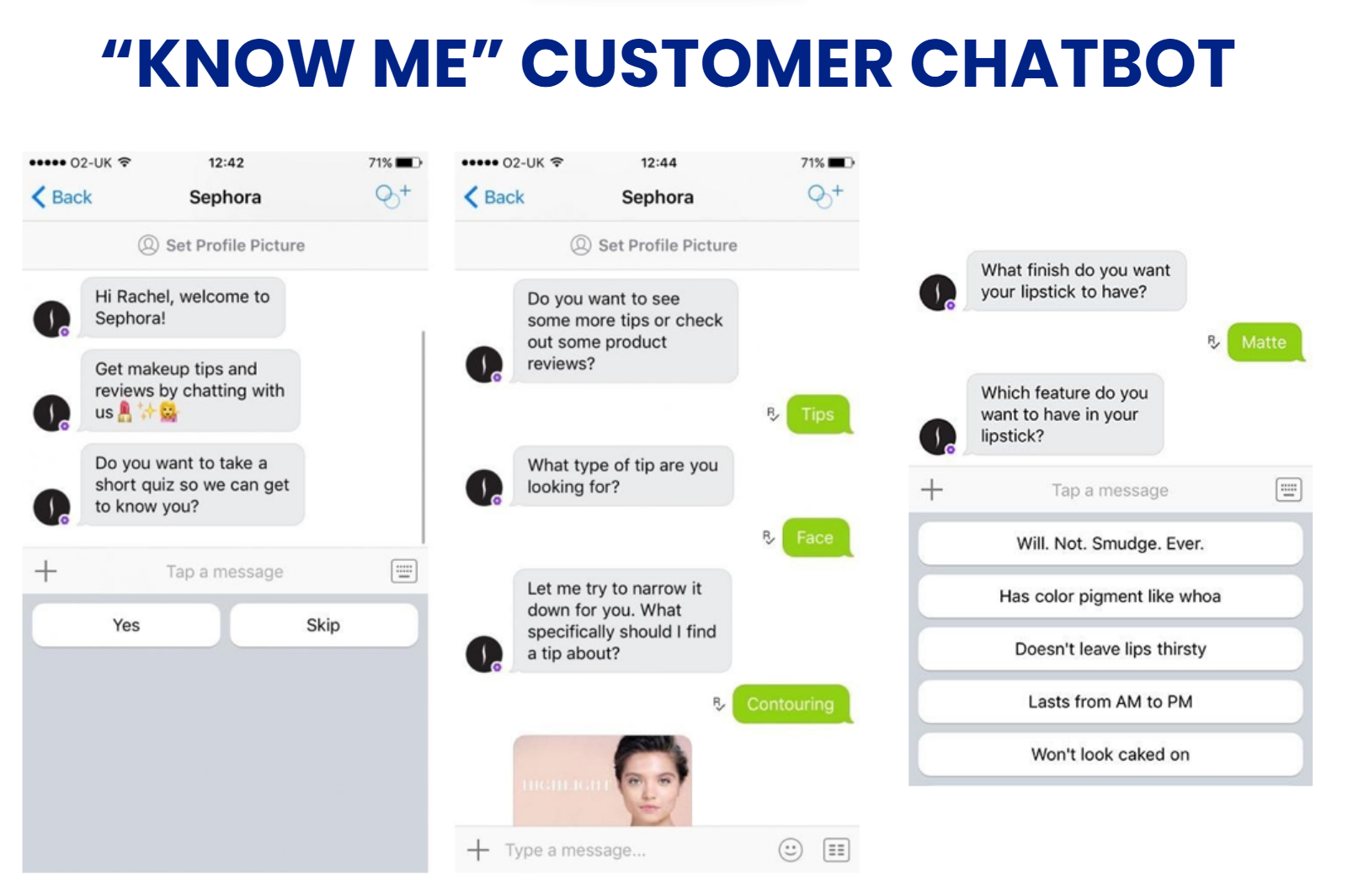
By understanding who your customers are, what they need, and how they prefer to be engaged, you can craft marketing strategies that hit the mark every time.
This approach not only enhances the customer experience but also drives engagement and conversions by delivering content and offers that are highly relevant and personalized.
Implementing the “Know Me” framework effectively transforms the way businesses interact with their customers, paving the way for deeper connections and, ultimately, turning satisfied customers into loyal brand advocates.
#2 The “Get Me” Framework
Understanding your customers goes beyond knowing their basic preferences and interests; it delves into comprehending their buying behaviors, motivations, and the obstacles they face in their purchasing journey.
The “Get Me” framework is designed to provide a deep dive into these aspects, employing a blend of marketing research, customer research, and product development insights.
This comprehensive approach ensures businesses can not only meet but anticipate customer needs, driving engagement and loyalty to new heights.
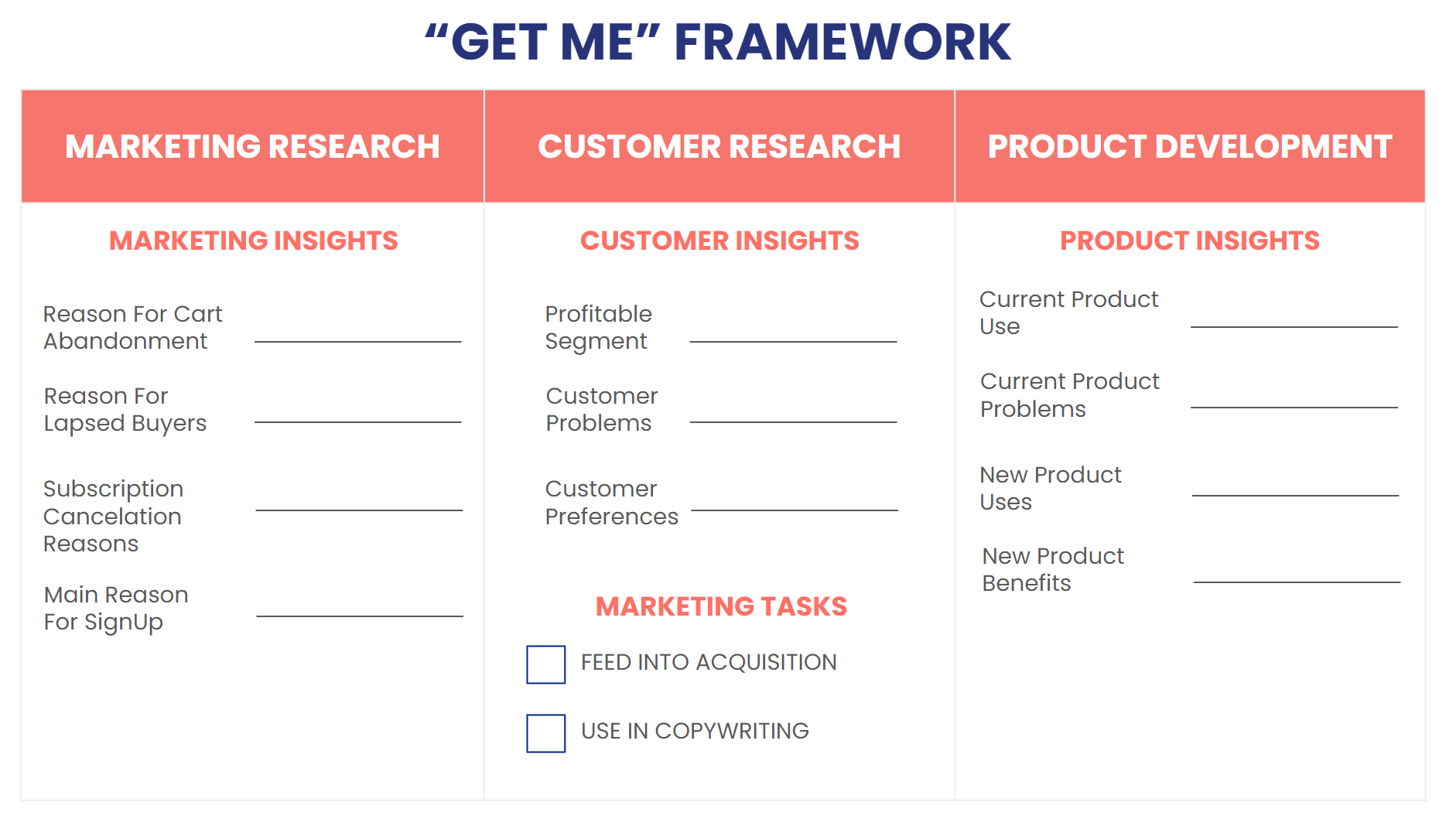
a. Marketing Research
This includes an in-depth study of the buying behavior of the customer.
Studies marketing insights like:
- Reason for Cart Abandonment: Investigate why customers leave items in their carts without completing a purchase. Understanding these reasons can help you address issues and reduce abandonment rates.
- Reason for Lapsed Buyers: Look into why previous customers have stopped purchasing. Identifying these reasons can inform strategies to re-engage these customers.
- Reason for Subscription Cancellation: Examine why subscribers opt out of your service. This insight is crucial for improving retention strategies.
- The Main Reason for Signup: Understand what drives customers to sign up for your emails, loyalty programs, or services. This helps in tailoring offerings to match initial expectations.
b. Customer Research
This includes the study of customer’s problems, & preferences.
Studies customer Insights like:
- Profitable Segments: Identify which customer segments are the most lucrative. Focusing on these segments can optimize marketing efforts and resource allocation.
- Customer Problems: Delve into the specific issues your customers face. Solutions tailored to these problems can significantly enhance product appeal and customer satisfaction.
- Customer Preferences: Gain a deeper understanding of what your customers prefer in terms of products, communication, and shopping experiences. This enables more personalized and effective marketing strategies.
c. Product Development
This includes the study of how a customer uses the product and what challenges it faces.
Studies Product Insights like:
- Current Product Use: Analyze how customers are currently using your products. This can reveal unexpected uses, informing potential product improvements or marketing angles.
- Current Product Problems: Identify any common issues customers encounter with your products. Addressing these problems can improve product quality and customer trust.
- New Product Uses: Explore potential new applications for your products. This can open up new markets and customer segments.
- New Product Benefits: Understand the benefits customers seek in new products. Aligning product development with these benefits ensures that new offerings resonate well with your target audience.
The “Get Me” framework is a powerful tool for businesses aiming to cultivate a deeper understanding of their customers’ buying behaviors and motivations.
By integrating insights from marketing and customer research with product development, companies can create offerings that truly resonate with their audience, addressing their needs and preferences in a way that feels almost intuitive.
This not only enhances customer satisfaction but also solidifies their loyalty, turning them into advocates for your brand.
Employing the “Get Me” framework effectively transforms insights into action, paving the way for sustained engagement and growth.
#3 The “Wow Me” Framework”
In an era where consumer expectations are higher than ever, merely meeting these expectations isn’t enough.
Brands need to exceed them, delivering experiences that not only satisfy but truly “wow” their customers.
The “Wow Me” framework focuses on creating these moments of delight, leveraging personalized recommendations and rewards to surprise customers in ways that foster deep loyalty and advocacy.
Here’s how this framework transforms customer interactions into memorable experiences.
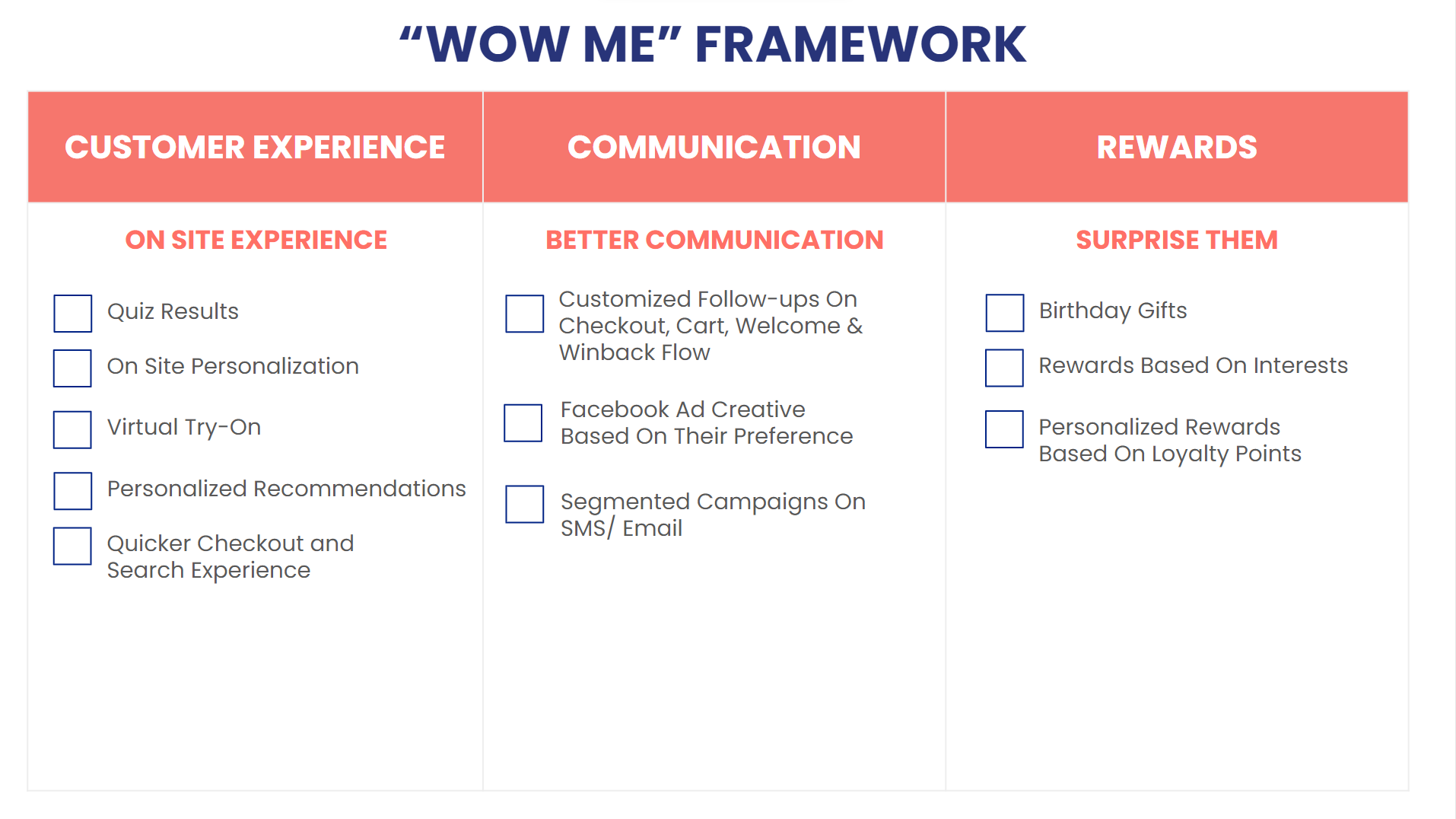
a. Customer Experience
This includes observing customers’ on-site experience and how to enhance it.
Studies customer’s on-site experience:
- Quiz Results: Utilize the outcomes of interactive quizzes to tailor the shopping experience, offering product recommendations that align perfectly with the customer’s preferences and needs.
- On-Site Personalization: Implement dynamic content personalization based on user behavior and preferences to make every site visit uniquely engaging.
- Virtual Try-On: For businesses in fashion, beauty, or accessories, offering a virtual try-on feature can significantly enhance the shopping experience, allowing customers to see how products look on them before making a purchase.
- Personalized Recommendations: Employ machine learning algorithms to analyze customer data and deliver product suggestions that are highly relevant to each individual shopper.
- Quicker Checkout and Search Experience: Streamline the checkout process and enhance search functionalities to make shopping as convenient and hassle-free as possible.
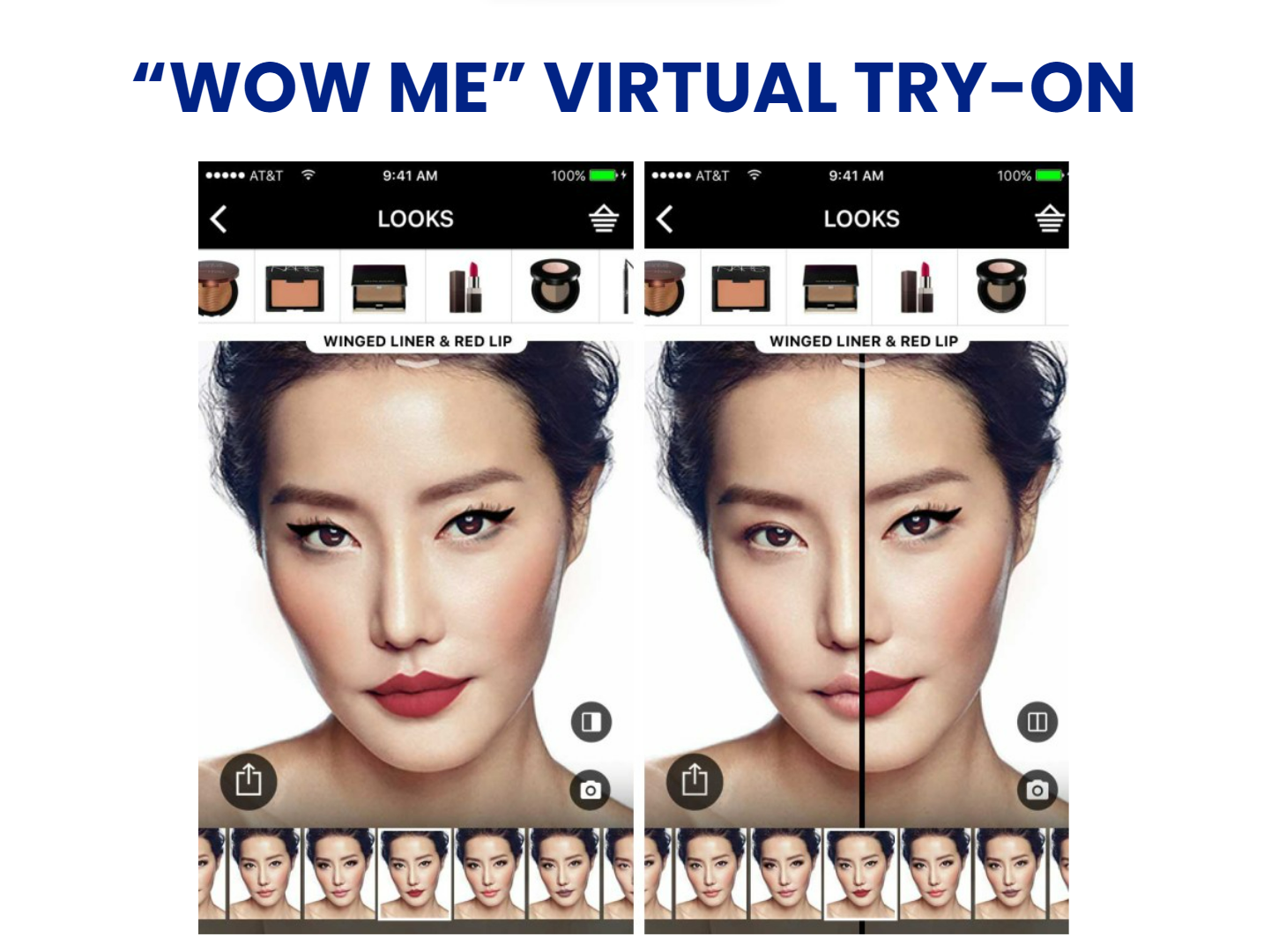
b. Communication
This includes how and when to communicate with your audience which leads to sure-shot conversions.
Includes better communication:
- Customized Follow-ups On Checkout, Cart, Welcome & Winback Flow: Tailor communication at every stage of the customer journey, from welcoming new subscribers to re-engaging lapsed customers, ensuring messages resonate with the recipient’s specific interactions and preferences.
- Facebook Ad Creative Based On Their Preference: Craft ad creatives that reflect the individual’s interests and previous interactions with your brand, making every ad feel like it’s speaking directly to them.
- Segmented Campaigns On SMS/ Email: Use segmentation to deliver highly personalized and relevant marketing messages through SMS and email, enhancing engagement and conversion rates.
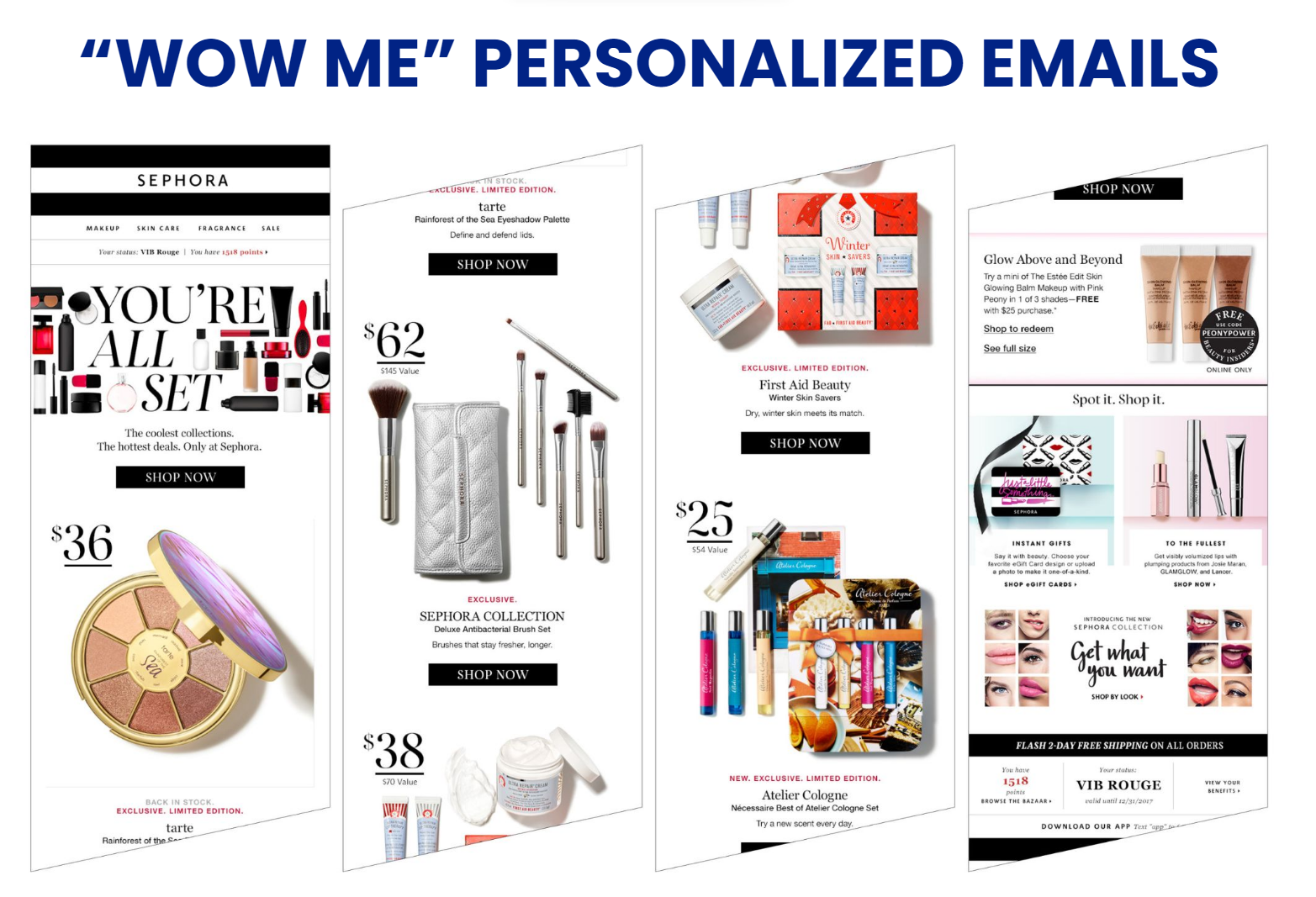
c. Rewards
This includes how to reward and incentivize your customers, ultimately converting them into brand loyalists.
Includes how to surprise your customers:
- Birthday Gifts: Celebrate customer birthdays with personalized gifts or exclusive discounts, making them feel valued on their special day.
- Rewards Based On Interests: Offer rewards that align with the customer’s interests or past purchases, ensuring they are both relevant and appreciated.
- Personalized Rewards Based On Loyalty Points: Customize rewards based on the accumulation of loyalty points, offering more personalized options as customers engage more deeply with your brand.
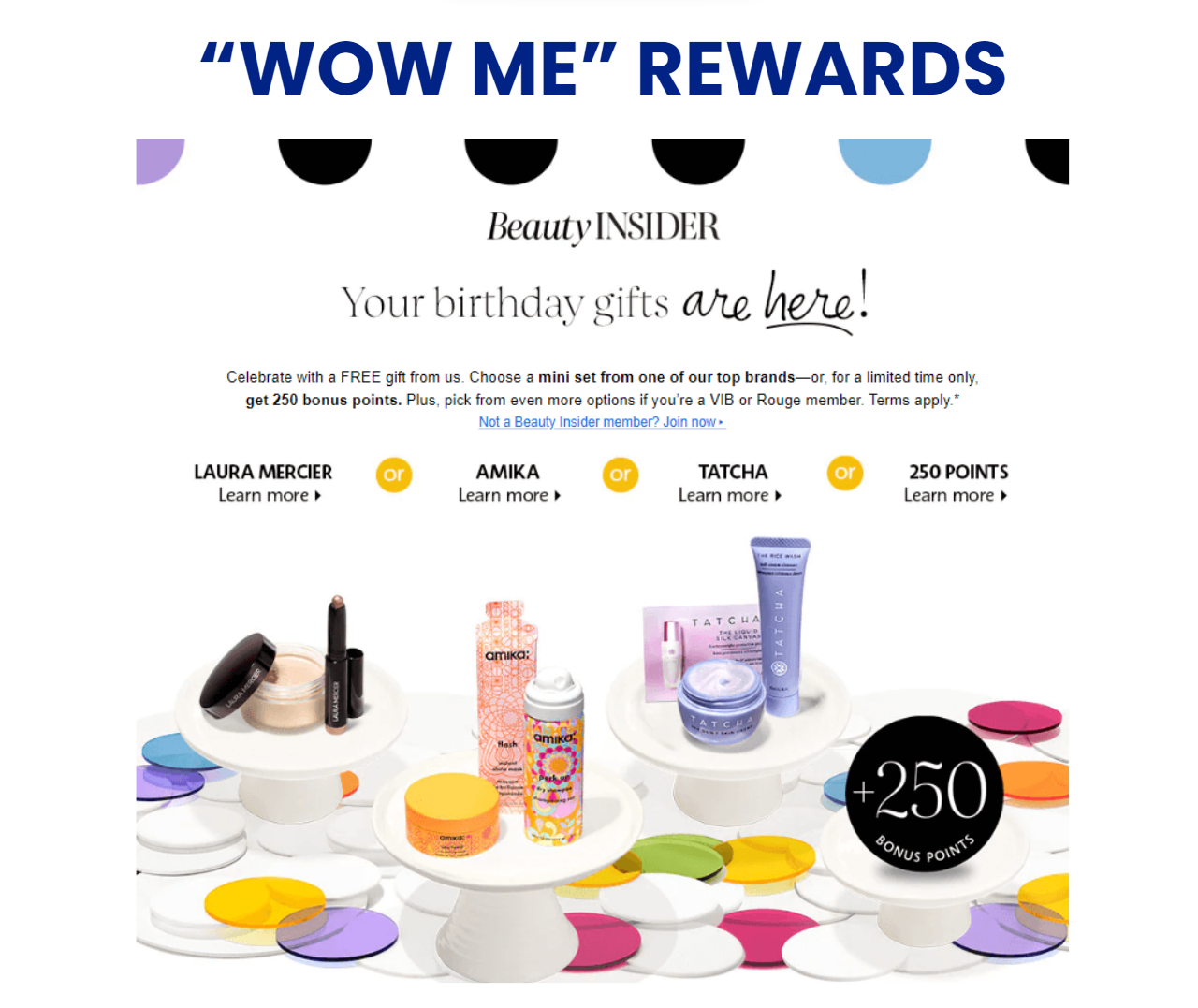
Conclusion
The strategic utilization of zero-party data through the “Know Me,” “Get Me,” and “Wow Me” frameworks presents an unparalleled opportunity for brands to elevate their customer engagement and loyalty to new heights.
By harnessing the insights provided directly by customers, businesses can tailor their offerings, communications, and rewards to meet the unique needs and preferences of their audience.
This approach not only enhances the customer experience but also fosters a deeper sense of connection and loyalty, turning satisfied customers into enthusiastic brand advocates.
In a digital landscape saturated with generic marketing messages, the brands that succeed will be those that listen to their customers and respond with personalized, relevant, and delightful experiences.
Zero-party data is not just a tool; it’s the future of customer-centric marketing, paving the way for more meaningful interactions and sustainable business growth.
